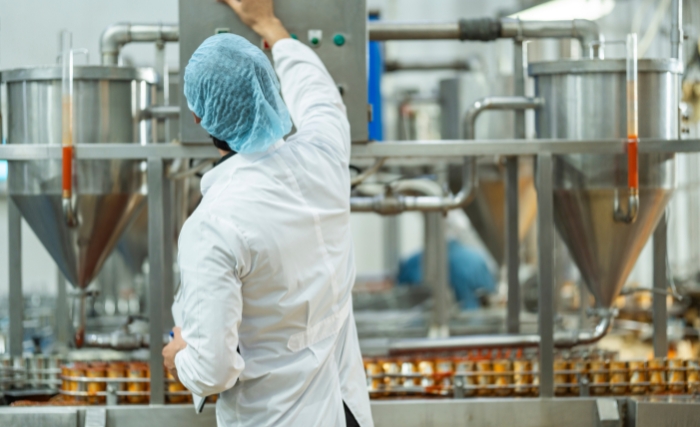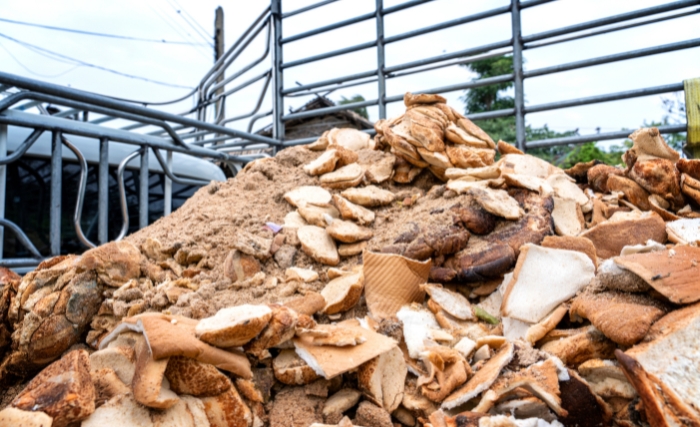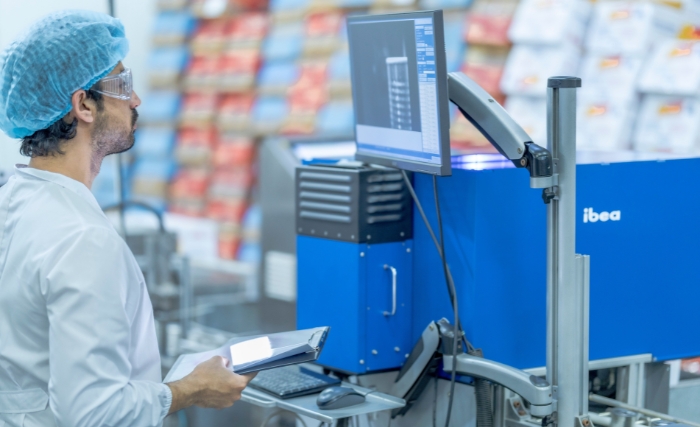
Low food manufacturing productivity has become a pressing issue facing the food and beverages sector. Thanks to a combination of rising costs, resource inefficiencies, labour shortages, and an inconsistent approach to technologies, output has slowed and waste has increased. In tandem with this, sustainability targets and market competitiveness demand higher standards of food production efficiency than ever before.
The challenge isn’t to produce more, but to do so in a way that maximises yield, reduces food industry waste, and creates a workforce that can adopt and run more advanced systems. For any business, the priority is understanding where productivity is being lost and identifying the most effective interventions to reverse the trend.
Waste Reduces Food Factory Productivity
One of the clearest measures of lost food factory productivity is the scale of waste across different phases of the supply chain. In the UK, millions of tonnes of food are lost every year, and manufacturing contributes a significant share. WRAP data shows that more than half of food waste from manufacturing and retail is avoidable. In fact, the numbers show us that targeted measures can cut that waste by more than 40 per cent.
This scale of loss isn’t only about sustainability; it’s also a direct hit to food manufacturing productivity. Waste is effectively production capacity that is paid for but never realised. Wasted ingredients, by-products or finished goods are time, labour, energy and resources that could have been deployed more effectively.

The main causes of food industry waste are often familiar.
Inaccurate forecasting, excessive giveaway in packaging, rework caused by inconsistent quality, and inefficiencies in changeovers. If you can improve these processes, you’ll see a direct boost to food production efficiency, as the same resources yield more saleable product and less waste.
Skills Gaps and Labour Shortages
Vacancy rates in food and drink manufacturing consistently sit above the UK average, with around 4.9 per cent of roles unfilled through 2024. This has two major impacts: it reduces capacity on the factory floor, and it makes it harder to implement new technologies designed to improve food factory productivity.
The gaps are particularly evident in leadership and digital skills.
Many operations already have access to potential productivity solutions (tools like predictive maintenance, advanced quality control systems or line scheduling software), but without the right skills, they’re seeing slow uptake and diluted benefits.
If low food manufacturing productivity is going to be addressed, then skills development needs to run in parallel with investment in technology. Upskilling supervisors, production managers, and operators in digital and process improvement disciplines means that innovation translates into measurable improvements in food production efficiency.
The Barriers to Technology Adoption
Technology is generally recognised as the key to higher food manufacturing productivity, but many organisations remain cautious. The food industry is typically more risk-averse than other sectors, with thin margins limiting capital available for investment. Research has highlighted that many firms were hesitant to adopt digital solutions such as AI-driven forecasting or automation, citing cost, uncertainty, and a lack of internal capability.
We need to be clear that the priority isn’t to overhaul systems in one move, but to take a much more phased approach. Piloting one automation project on a high-impact line or introducing real-time data collection for a single process can demonstrate to the sector that there’s a clear return on investment. These incremental gains are important in order to build the case for broader adoption and gradually shift both culture and performance.

The Role of Process Control
One of the most overlooked areas in the drive for higher food factory productivity is process control. Losses can easily occur not because of outdated equipment, but because processes haven’t been standardised, monitored or consistently executed.
There are some simple but powerful interventions.
- Statistical process control to identify deviations before they cause rework or waste.
- Dynamic line scheduling to minimise downtime during product changeovers.
- Mass-balance monitoring to pinpoint where material losses occur.
- Better handling, storage and temperature management to reduce spoilage.
These are relatively low-cost improvements compared to large automation projects, but they can have a major impact on both yield and food production efficiency.
Are You Ready to Tackle Food Manufacturing Productivity Challenges?
With years of experience in the food and beverages sector, I’m well placed to help you identify and address the underlying causes of low food factory productivity. I can support you to map losses, evaluate your business processes, and build a tailored digital and skills roadmap so that you can achieve measurable improvements in food production efficiency. From rapid waste-reduction sprints to long-term automation strategies, I can help you ensure that productivity gains are tangible, sustainable, and fully embedded.
Get in touch to discuss how we can build a productivity plan that cuts food industry waste, increases efficiency, and equips your teams with the skills they need to compete.
FAQ
What causes low productivity in food manufacturing?
The main causes include high levels of avoidable waste, skills shortages, labour gaps, and slow adoption of new technologies.
How does the food industry waste affect productivity?
Every tonne of wasted food is lost resources, labour and energy, reducing overall production efficiency and profitability.
What technologies improve food factory productivity?
Automation, real-time data systems, machine vision for quality control, and predictive maintenance are among the most effective.
How important are skills in boosting productivity?
Skills are crucial. Without digital and leadership capabilities, new technologies cannot deliver their full potential.
What is the first step to improving productivity?
Start with a loss-mapping exercise to identify waste and inefficiencies, then target the most controllable areas for quick wins.

